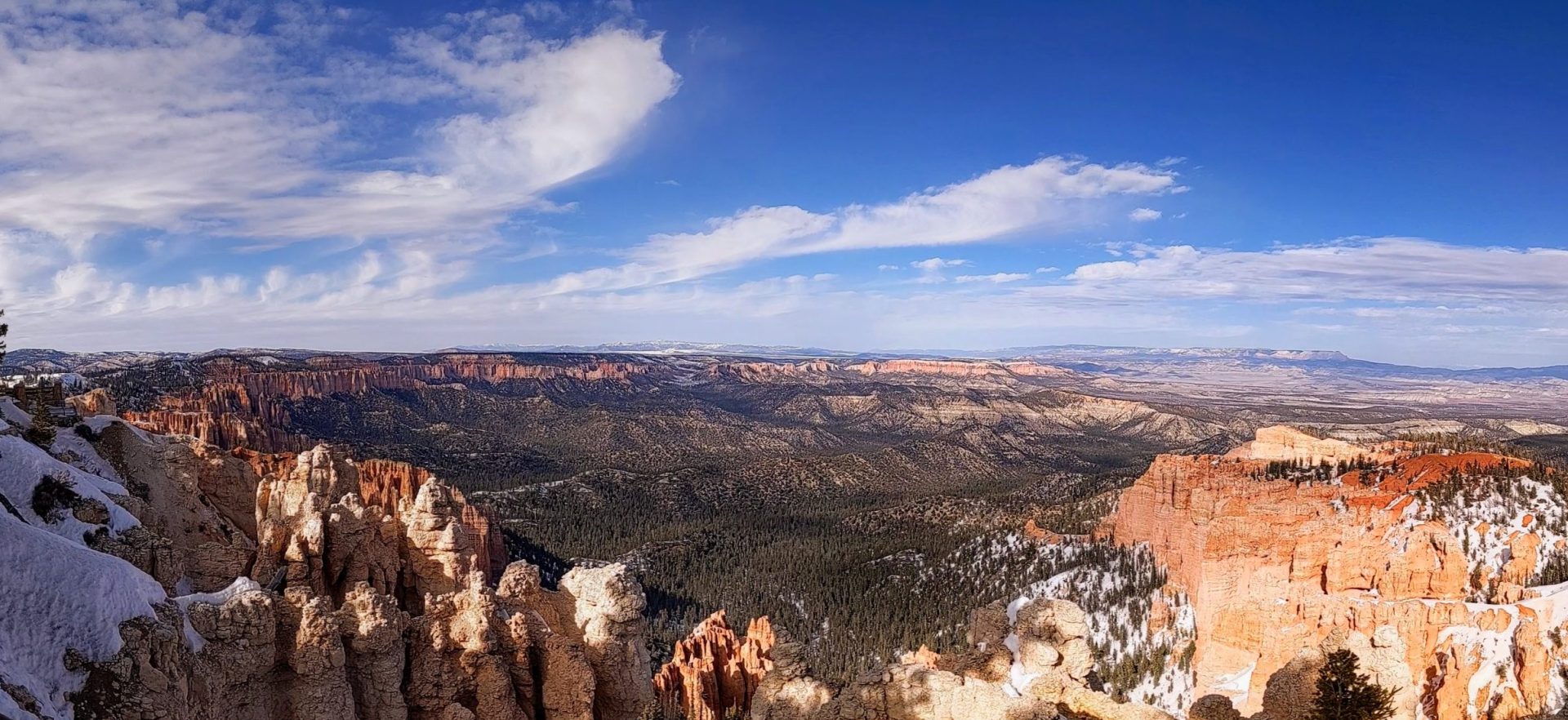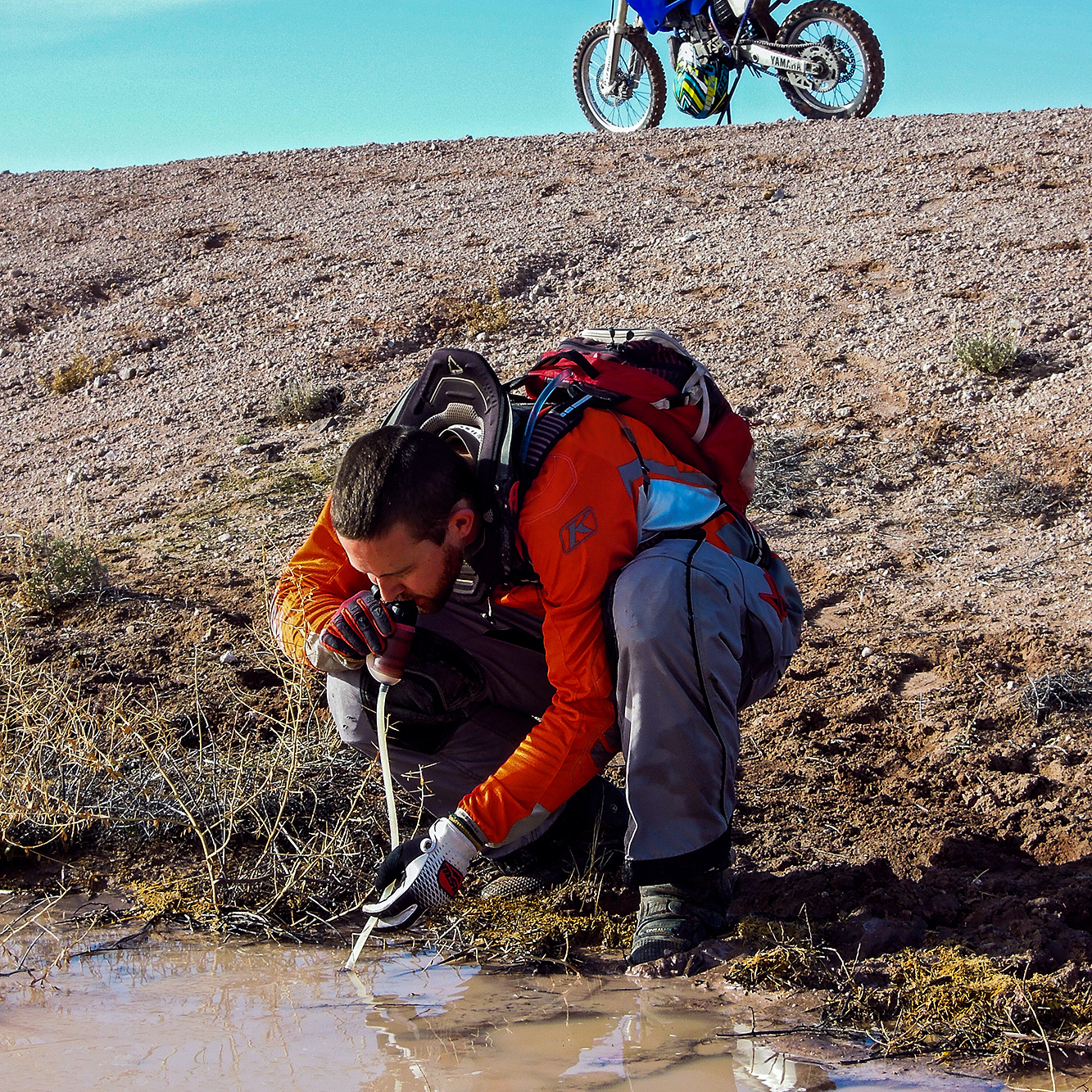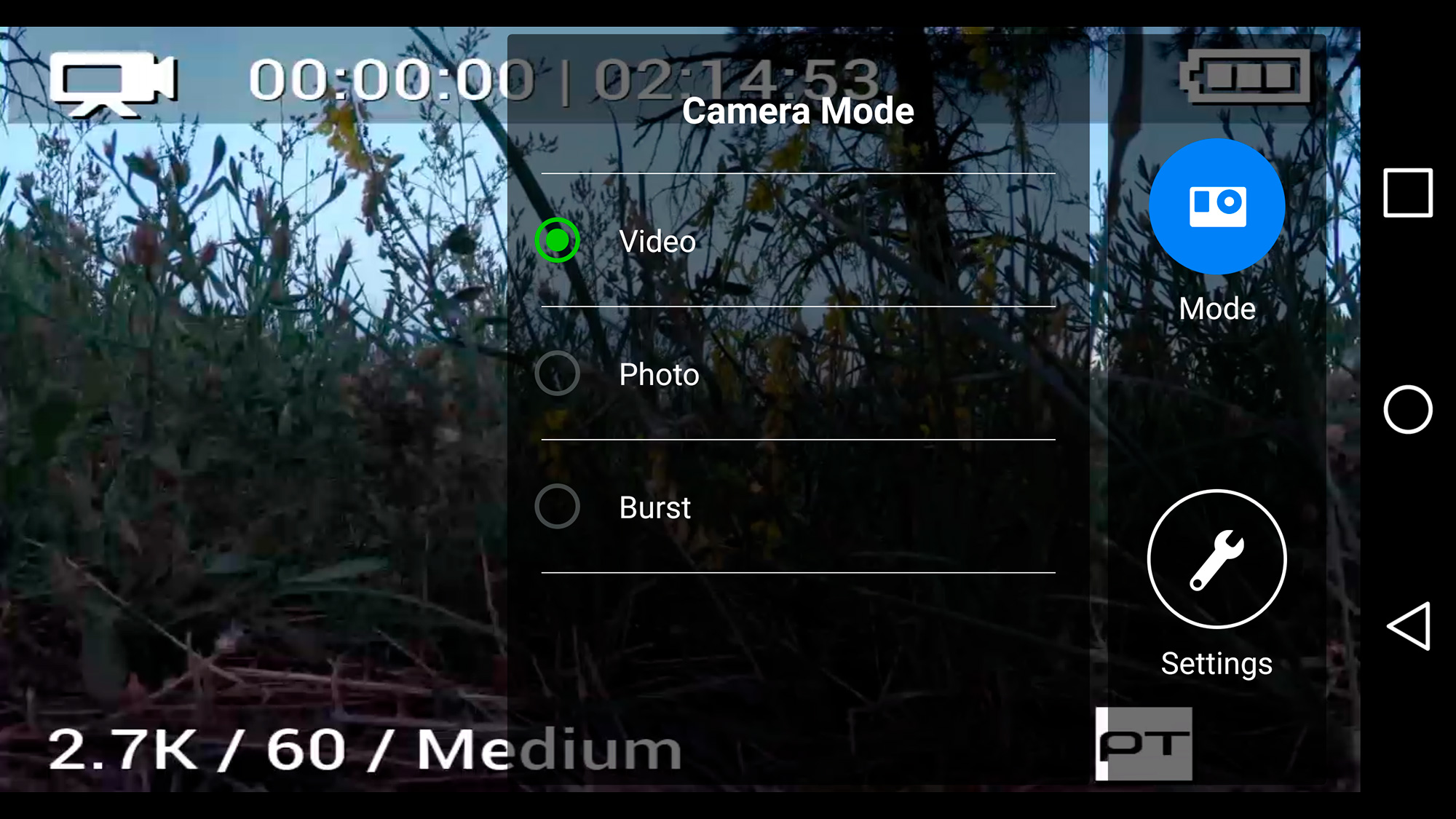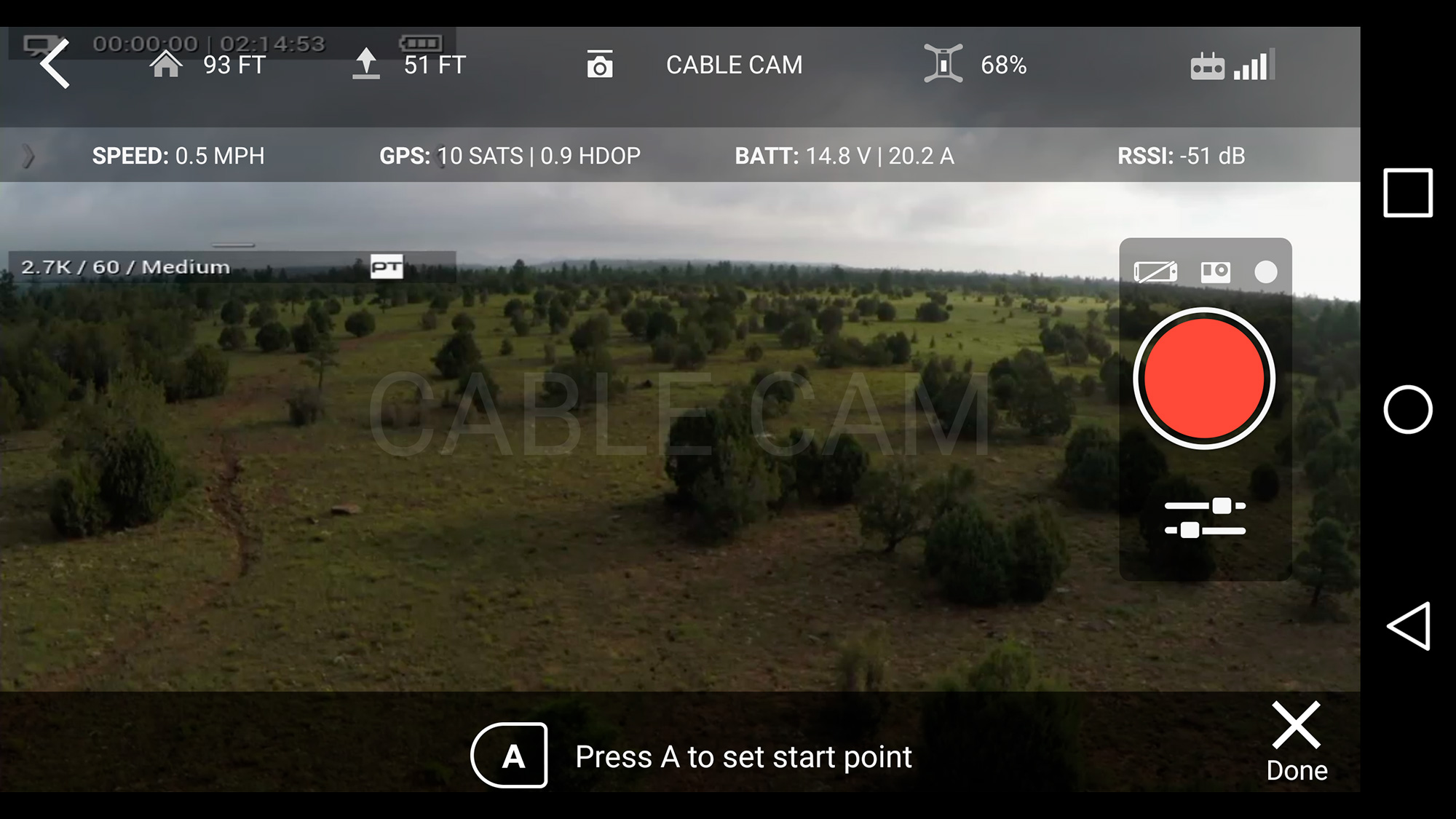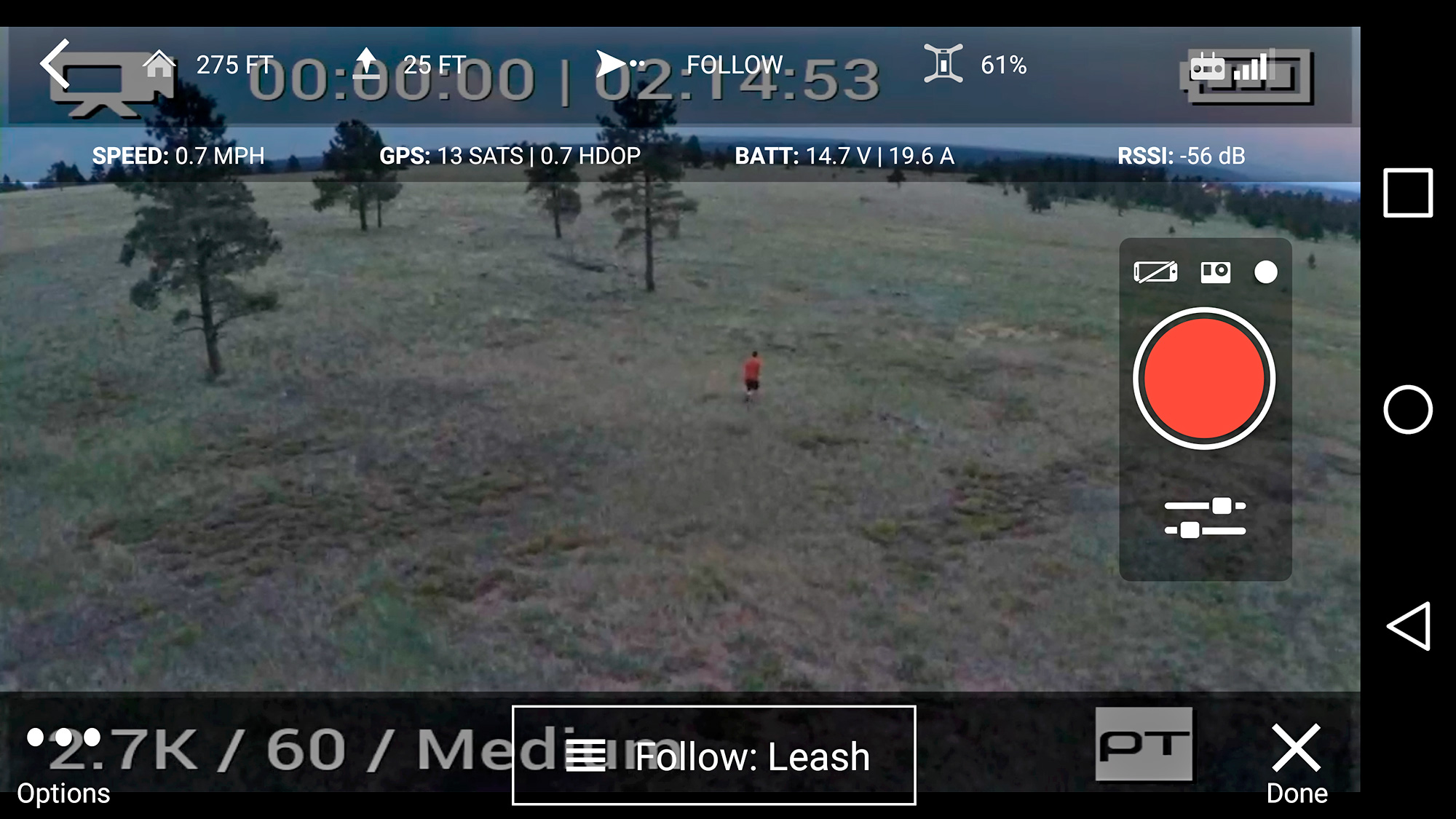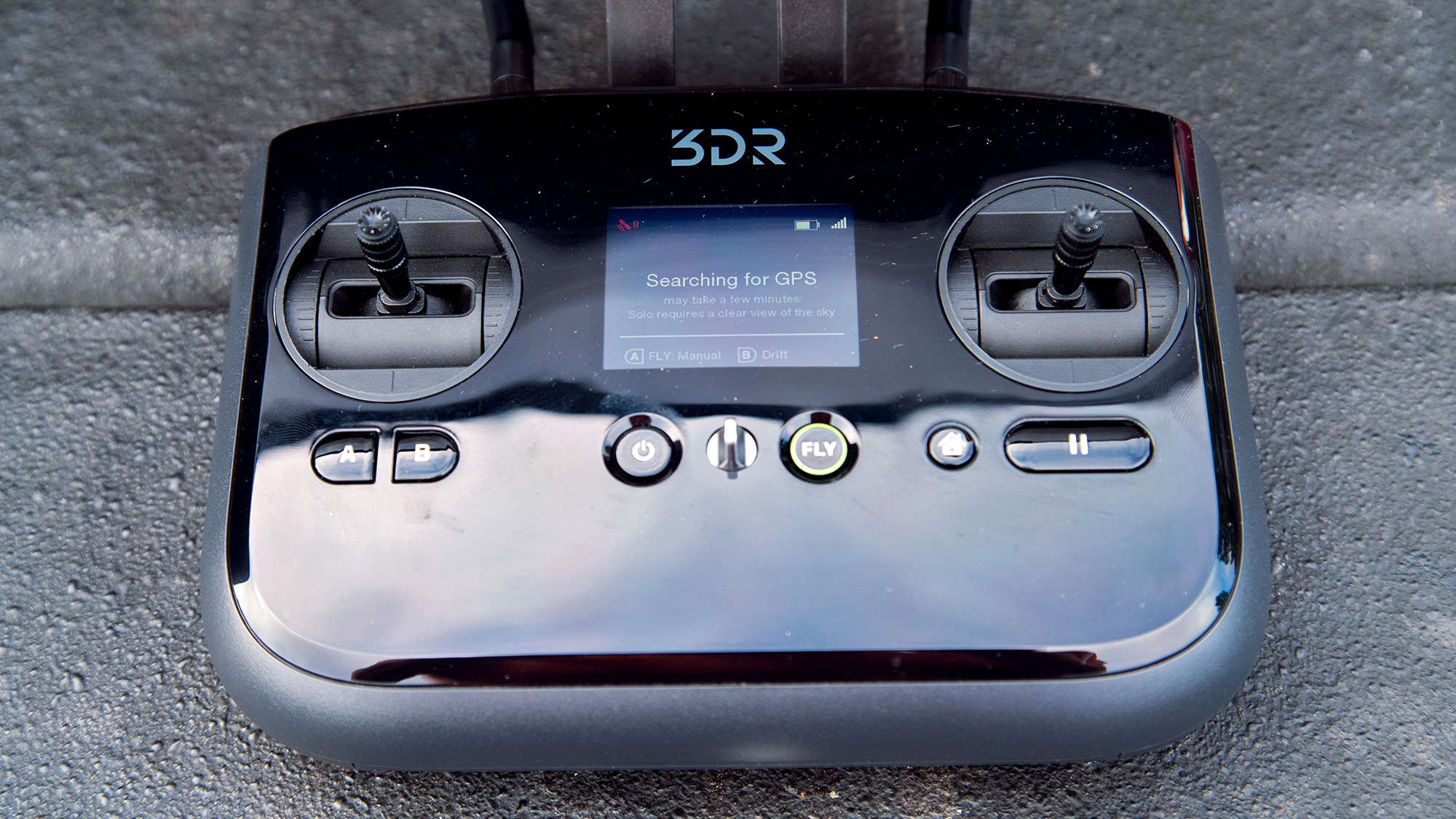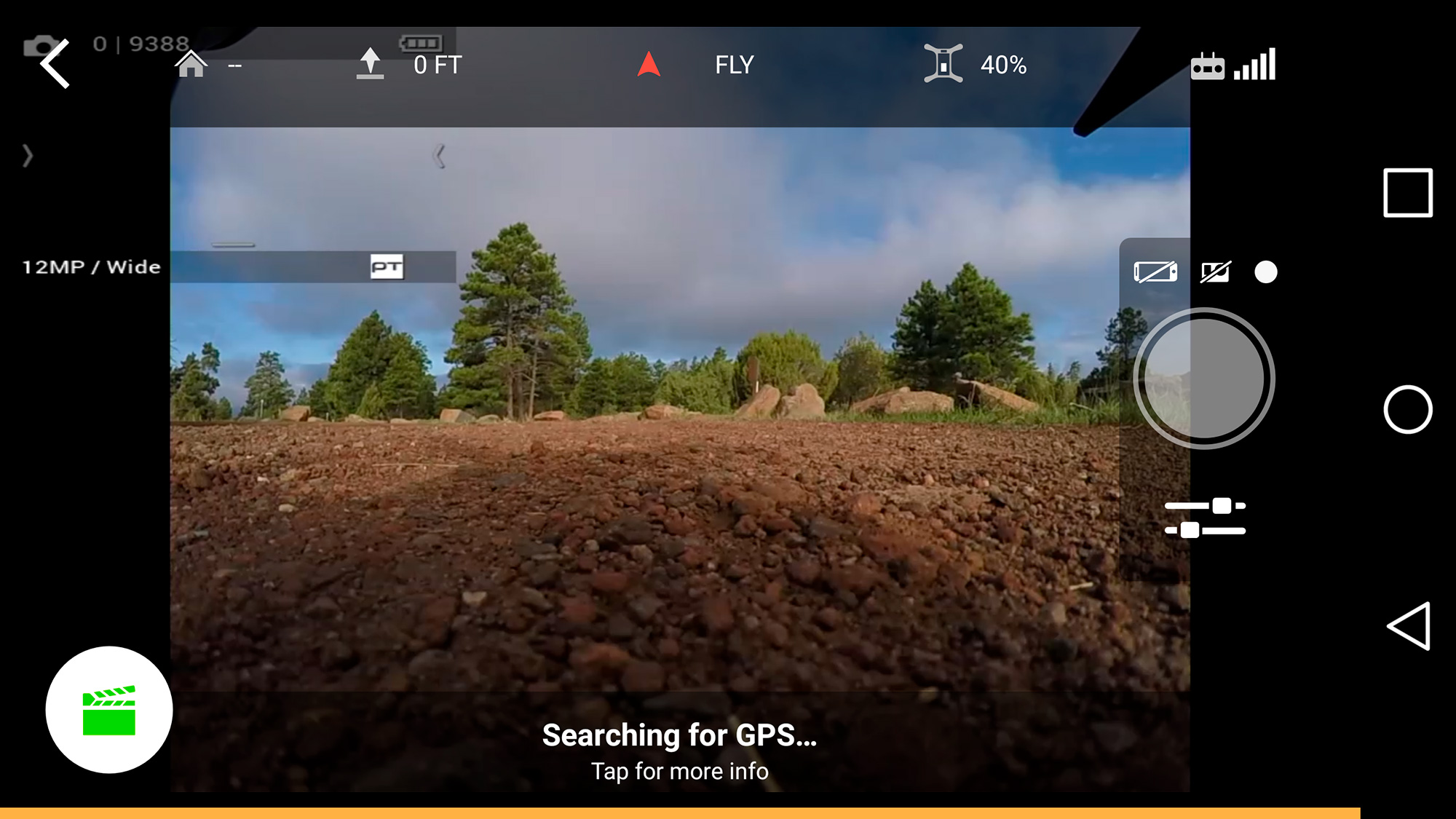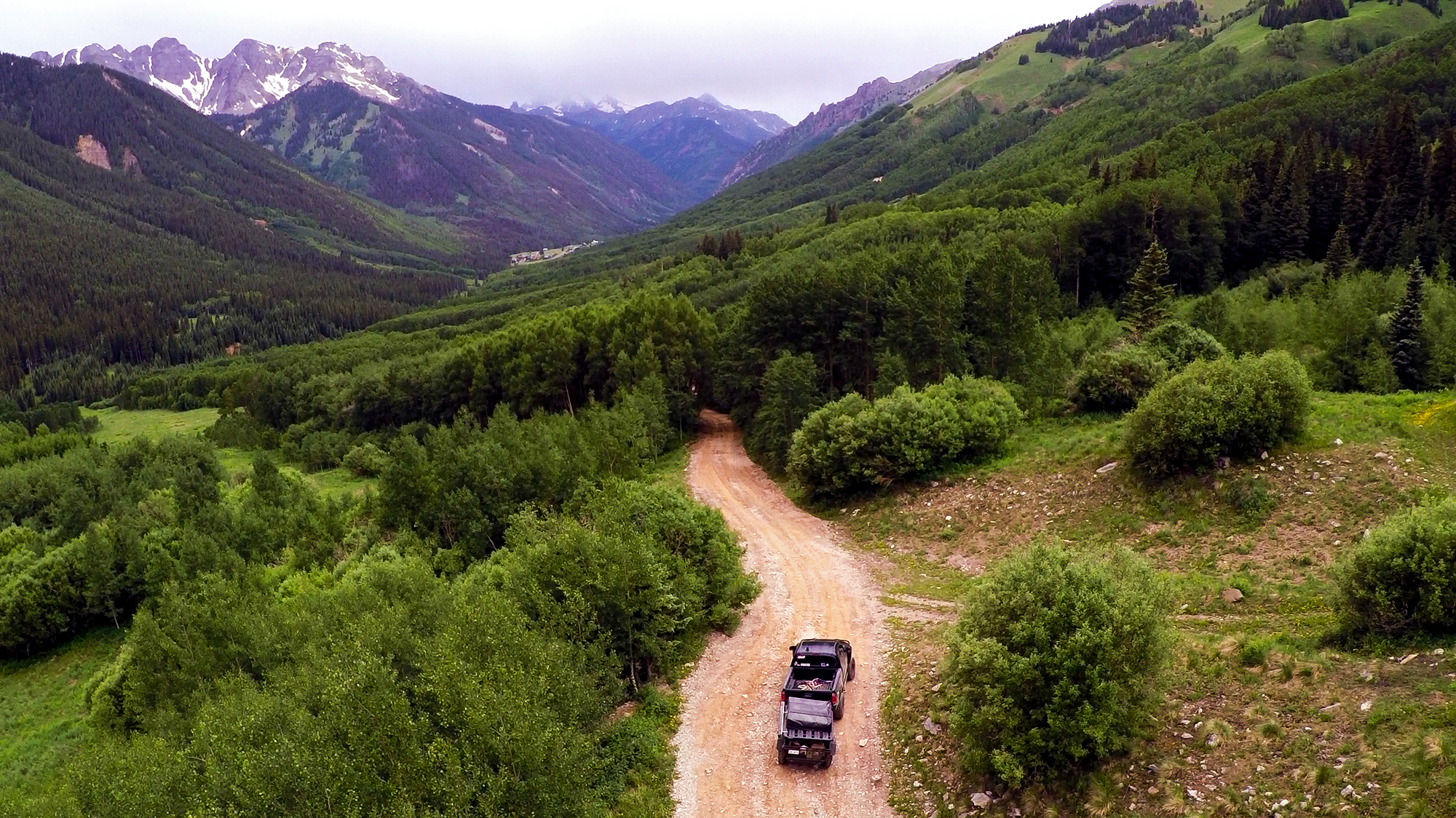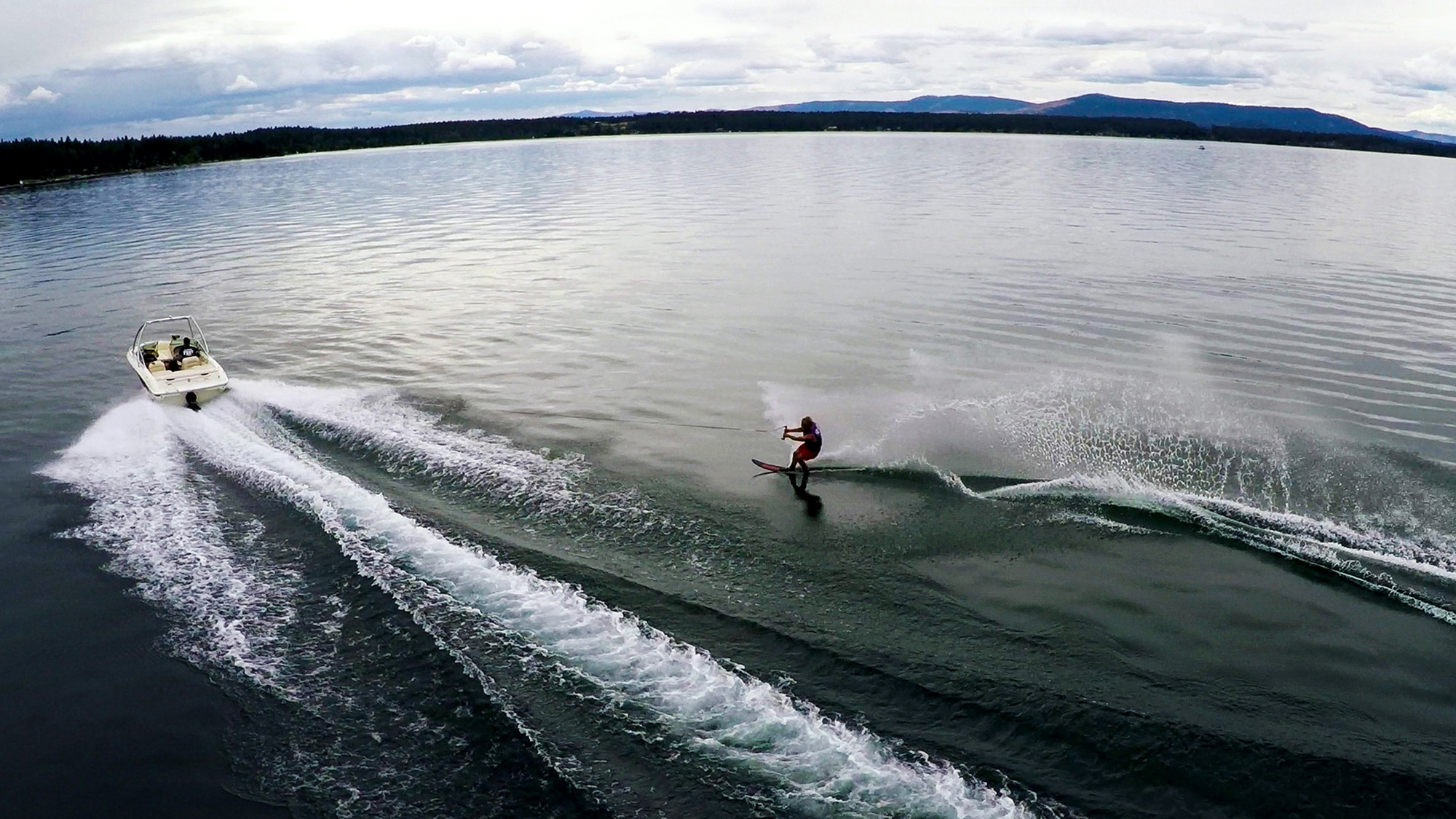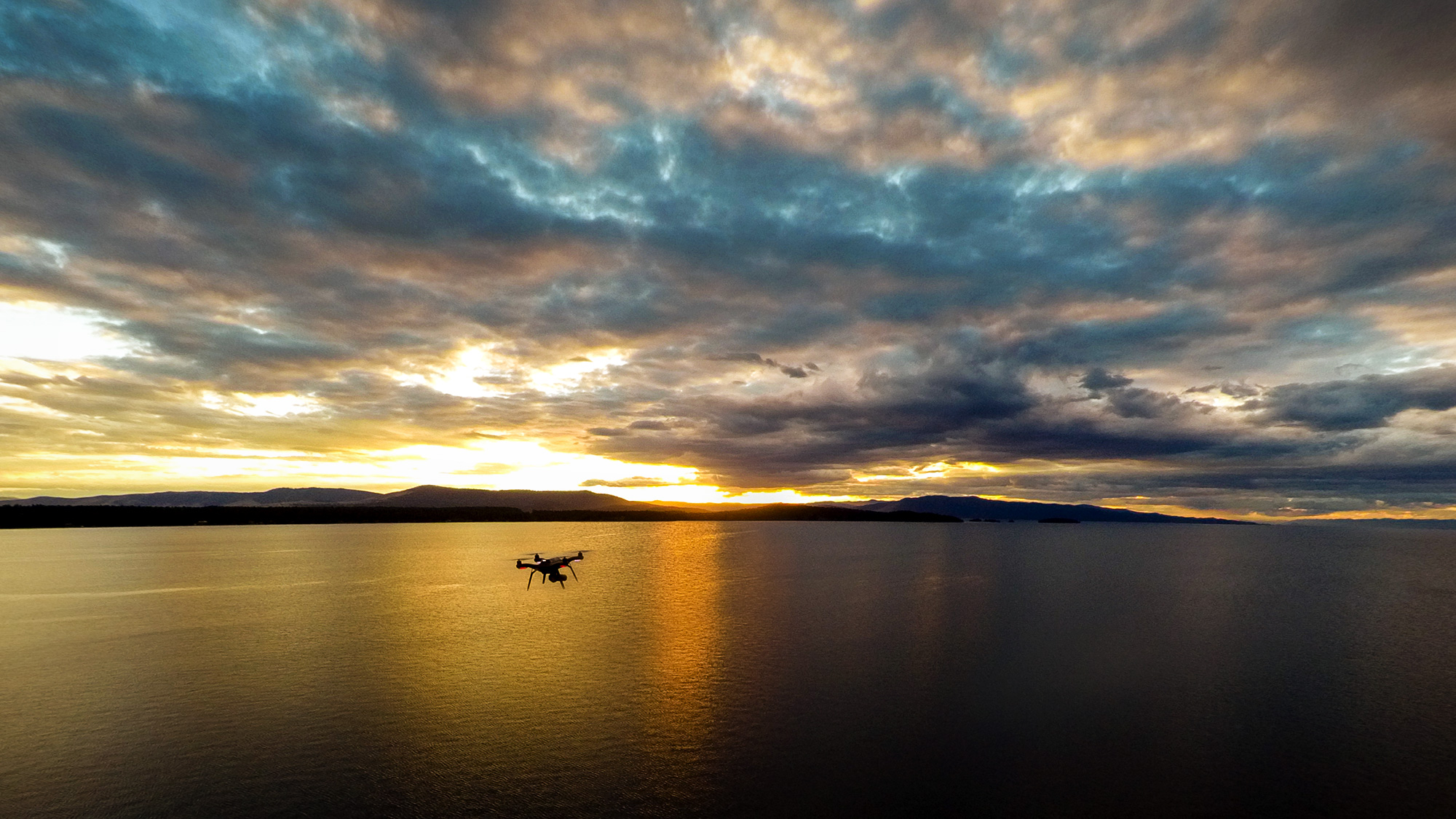Remember that one time your ‘quick’ morning hike/ride/<insert adventure here> turned into an all-day safari, and you ran out of water before you got back to the truck? Perhaps you passed by a source of water on your way back, and your mind decided to remind you of all of the millions of ways in which water would be awesome right now. But you can’t drink from that sketchy-looking pool of turbid water, because giardia. (Pro Tip: You don’t want giardia.) Well, thanks to MSR’s new Trailshot water filter, there’s now no reason why you can’t belly up to that water source and drink long and deep.
The Trailshot is the water filter that you really have no excuse not to always carry with you. It takes up the same amount of space as two energy bars in your pack, and weighs in at all of 5.4 ounces. This isn’t some single use ‘survival’ filter where you can only suck water into your mouth. This is a proper water filter that can be used over and over to keep you safely hydrated anytime you need to gather more water in the field. The Trailshot uses MSR’s hollow fiber filter technology that effectively filters bacteria, protozoa, and particulates from any water source. For the North American user, this is really all you need in a filter. However, if viruses are a concern—international travelers, I’m looking at you—you’ll need to add another step to your water purification process like some Aquatabs, or check out MSR’s Guardian filter that handles everything (bacteria, protozoa, particulates, and viruses). When viruses are not a concern, the Trailshot is the water filter that you should always have in your kit.
Using the filter couldn’t be easier: simply drop the pre-filter end of the hose into a water source, and start squeezing the filter body with your hand. You can drink right from the mouthpiece on the filter, or point it into a water bottle or hydration reservoir and fill it at roughly one liter per minute. A big advantage with the Trailshot’s hose design is that you can pull water from a very shallow source, where a water bottle-style filter would be very hard to use. Another advantage is with turbid water: a UV-light type filter is unable to effectively purify cloudy water, a task easily handled by the Trailshot.
MSR states the Trailshot has a filter life of 2,000 liters, but your mileage may vary depending on how particulate-laden your field water sources are. Spare filter cartridges sell for $35, and carrying a spare never hurts.
Stay Out Longer
A water filter is a key piece of gear for anyone who wants to carry less water (and weight), or who doesn’t want to be limited by the amount of water they can carry. As long as you know that there will be water to collect in the field, you can carry only the amount of water you need to get from source to source. This is a huge advantage for ultra-runners, enduro mountain bikers, or anyone who likes to go fast and light. If you’re the type of person who must to see what’s over the next hill, or who wants to be able to take the long way home, the Trailshot is a great piece of gear to keep in your kit so you can stay out longer than intended.
Dehydration is no joke: if you’ve ever run out of water in the field, you know it isn’t a good time. For the space of two energy bars, a Trailshot in your kit can keep you and a friend hydrated from practically any field water source. Mine traveled all over the Southwest with me this fall, and even when it’s just along for the ride, knowing I have a way to safely gather water from the field is a huge confidence boost. The Trailshot retails for $49—a no-brainer for anyone who plays outside. Pick one up, and avoid that one time where you ran out of water.
